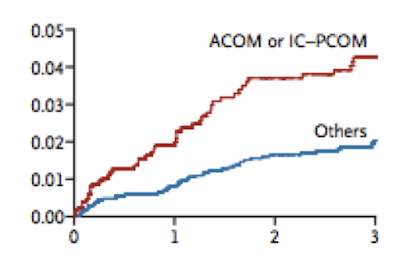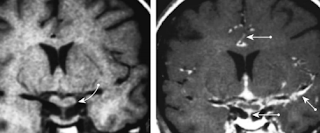PRESSORS
Back to basics:
- Most tissues need MAP > 60 to perfuse, brain needs CPP > 60.
- V1 is expressed in blood vessels and leads to vasoconstriction, V2 is expressed in renal ducts and leads to increased absorption of water and Na.
- Remember that the catecholamine system is mediated by cAMP
- Synthetic pressors: dobutamine, isoproterenol, phenylephrine
Epinephrine
- at 0.01-0.1 mcg/kg/min - B1 effects predominate at these lower doses, and you get mainly inotropy/chronotropy
- 0.1-0.2 mcg/kg/min - a1 effects predominate at higher doses, and you get lots of boost to SVR
- Onset is fast, need be titrated every 2-5 mins
- uses: ACLS, inotropic support post cardiac surgery, second line for sepsis after norepi and vaso.
- problems: tachyarrhythmias, vasoconstriction of splanchnic and renal vessels, lactic acidosis, hyperglycemia to the point where people need to be on an insulin gtt.
- for anaphylaxis, you give 0.3mg IM, can repeat every 15-20 mins. If severe, can give IV epi 0.1mg slow push. (in people on b-blockers, can have paradoxical response to epi - in which case, glucagon and ipratropium - good
paper in circulation on anaphylaxis)
Norepinephrine (Levophed)
- dose ranges 0.01 to 0.2 mcg/kg/min. There is technically no upper limit but people rarely go above 0.2.
- almost all a1 activity - has very minor B1/2 activity that counteracts the reflex bradycardia so that you get net no effect on CO/HR.
- First line for sepsis and for cardiogenic shock with low SVR. Also tends to be our go-to for hypotension and vasospasm in the neuro ICU although there is approx zero data on this.
- problems: tachyarrhythmia - less than epi/dopamine at equipotent doses. Digital ischemia at high doses.
- onset in 1 min, t-1/2 5 mins, q2-5 min titration
Vasopressin
- 0.03-0.05 units/min (0.002-0.005 units/kg/min, 1-10 units/hr)
- Binds to V1 and V2, augments SVR and MAP, has no effect on the heart.
- Uses: first line for distributed shock along with NE, variceal bleeding (in europe they use turlipressin)
- One of the advantages is that it works well at low pH - the catecholamine based pressors start to stop being effective below pH of 7.2 to 7.3
- Onset 5 min, t-1/2 10 mins.
- Problems: cardiac ischemia, can cause severe peripheral ischemia, splanchnic vasoconstriction. At very high doses, around 10x the dose we normally use, can reduce CO.
- Thought process is that in sepsis, there is a relative deficiency of vasopressin/ADH - and so 0.03 units/min replaces the endogenous supply
Phenylephrine (Neo)
- 0.01 to 0.3 mcg/kg/min.
- Pure a1 effects. Increases SVR and MAP, reflex decrease in HR and CO (from dec HR and from afterload)
- uses: neorogenic shock, sepsis, preferred in patients who are tachycardic.
- "push dose" for procedural hypotension - 50-100 mcg every 1-2 mins prn. Anaesthesia loves this drug for intraop hypotension.
- You have to be really careful with dosing though -- a standard premixed syringe in the OR is 100mcg/mL. A bag for drip is 200mcg/mL. And if you order it from pharmacy, they will send you a vial which is 10 MG per mL, which is 100x more potent than the premixed syringes. 100x!!!
Dopamine
- 1-3 mcg/kg/min: very selective for dopa receptors: causes renal/mesenteric vasodilation, leads to increased UOP. People used to think this dosing was "renal protective" but the trials show no change in the onset of of renal failure, no change in rate of progression to HD. Sometimes liver surgeons will use it to decrease CVP while augmenting BP.
- 3-10 mcg/kg/min: selective for B1, semi selective for D, inotrope and chronotrope
- 10-20 mcg/kg/min: selective for a1, augments SVR
uses: sepsis (rarely used except in those people who are both septic and brady or people who are really crashing and you're reaching for a 4th/5th/6th gtt), cardiogenic shock with low MAPs.
- This is one of the few pressors that people are typically comfortable giving in a peripheral line, up to doses of 10 -- so at one of the hospitals where I trained, the medicine/cards teams loved to use DA gtt on CHF-admitted-to-the-wards-for-diuresis patients when lasix alone wasn't working bc the EF was too low.
- Also easily available at most places premixed so if you're at some random hospital, you are likely to have this most easily and quickly avail.
- Problems: more tachyarrhythmias than levo at equipotent doses
- Onset in 5 minutes, half life of 2 mins.
Isoproterenol
- Pure B1 effects. Augments CO and HR.
- Rarely used except in some heart transplant patients. As a result has become very expensive. Which means we use it even less.
Dobutamine
- 1-20 mcg/kg/min
- Selective for B1
- Causes reflex vasodilation and decrease in MAP.
- Uses: acute decomp HF, cardiogenic shock with OK MAPs. In people who take it home in a backpack for HF, more dangerous bc the half life is 2 mins (onset is 2 mins) - so if your pump fails you're in trouble fast.
Milrinone
- 0.1-1.0 mcg/kg/min -
- PDE3 inhibitor
- Causes vasodilation esp in pulmonary vasculature, augments inotropy
- Uses: acute decomp HF, in combo with epi after cardiac surgery. Cardiac surgeons love this drug.
- Problems: hypotension, reversible thrombocytopenia (cAMP is important in megakaryocyte differentiation - as soon as you stop the drug, the megakaryocytes can go back to producing platelets)
- Has very long half life- onset 15 mins, t-1/2 1-2 hours. Titrate slow.
SOAP II trial
- N= 1679, multi center, randomized, double blinded trial of NE vs Dopamine
- Inclusion: <18, shock from any cause (defined as MAP<70/SBP<100 despite fluids + evidence of end-organ damage or lactic acidosis)
Bottom line: essentially no difference in survival (NE trended towards better) - way higher incidence of arrhythmia with DA
CATS Trial:
- N=330, multi center, randomized double blind NE + dobutamine vs epi
- Inclusion: septic shock (infection + SIRS + organ hypoperfusion) with SBP/MAP requiring pressors.
Bottom line: no difference
CAT trial:
N= 280, prospective double blind RCT
Inclusion: pressor requirement for any reason.
Outcome: no difference in time or probability of achievement of MAP goal (typically was in the 30-40 hour range), higher incidence of hyperglycemia and lactic acidosis with epi.
VASST trial:
N= 778, randomized double blind controlled trial low dose Vaso vs moderate dose NE (5-15 mcg/min approx 0.07 mcg/kg/min)
Inclusion: septic shock already on low dose NE (i.e. unresponsive to fluids and <5mcg/min of NE)
Bottom line: for septic people already on low dose NE, adding low dose vaso trends to better outcomes than augmenting to higher dose NE. The difference is significant in less severe septic shock. The difference were not significant but just from the numbers it looks like vaso might cause more digital ischemia while NE causes more mesenteric ischemia.

























































